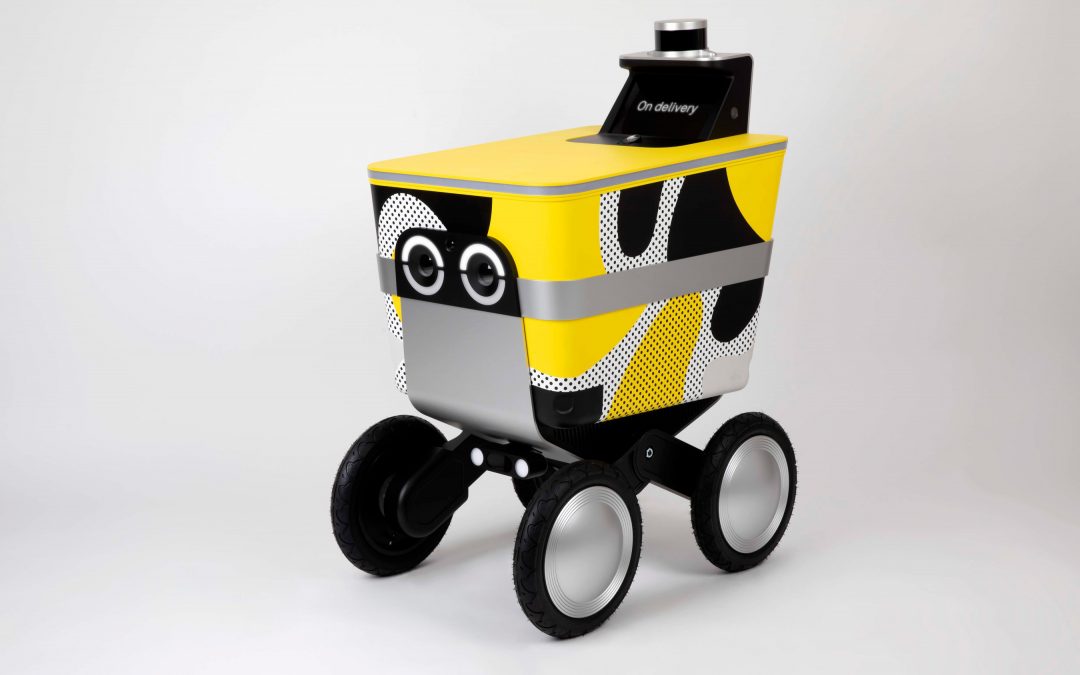Less than a year after being spun off from Postmates, Serve Robotics hit a significant milestone by deploying next-generation robots that are the first autonomous vehicles to complete commercial deliveries at Level 4 autonomy.
That elusive milestone, which mass-market passenger cars have yet to achieve, means Serve’s delivery bots can routinely operate without human intervention. Instead, they can rely on their onboard capabilities to handle most of what daily urban life throws their way, from dogs to inclement weather and other unexpected obstacles on sidewalks and street crossings.
This industry first is the result of nearly five years of work by the Serve Robotics team and represents a major step forward for the autonomous vehicle industry, significantly lowering the barriers for autonomous delivery at scale.
Serve Robotics recently completed the first-ever delivery at Level 4 autonomy, navigating fully autonomously in designated areas. The company’s robots are equipped with an extensive array of technologies that ensure the highest degree of safety by utilizing multiple layers of redundant systems for critical navigation functions. This includes multiple sensor modalities—active sensors such as lidar and ultrasonics, as well as passive sensors such as cameras—to navigate safely on busy city sidewalks.
Serve Robotics’ achievement required development of a wide range of market-leading capabilities, such as automatic emergency braking, vehicle collision avoidance and fail-safe mechanical braking.
“I’m proud that Serve Robotics has achieved Level 4 autonomy, which further enhances public safety by significantly reducing the potential for human error. This milestone begins to unlock the full potential of robotic delivery,” said Serve Robotics co-founder and CEO, Dr. Ali Kashani. “This technical and commercial milestone is an achievement for the entire AV industry, and accelerates our mission to make delivery more accessible and sustainable.”
Serve’s technical breakthrough was possible with help from key technology partners, including NVIDIA and Ouster. The NVIDIA Jetson platform, designed for robots and other autonomous machines, powers the AI computing necessary for Serve robots to understand their complex environment in real time. Ouster’s lidar sensors provide small, lightweight, power-efficient sensing technology that enables the robots’ reliable self-driving capabilities.
“Serve Robotics’ accomplishment represents a breakthrough for commercial deployment of AV technology for sidewalk delivery,” said Murali Gopalakrishna, head of product management, autonomous machines and GM for robotics at NVIDIA. “We look forward to Serve continuing to leverage the NVIDIA Jetson edge AI and Isaac robotics platforms to further advance their technological lead.”
“Serve Robotics has achieved a major breakthrough for the AV industry and for sidewalk delivery,” said Angus Pacala, CEO of Ouster. “Ouster is pleased to partner with Serve as they continue to scale and bring lidar-powered Level 4 autonomy to doorsteps across the U.S.”
Serve Robotics has completed tens of thousands of deliveries in LA. Its fleet of next-generation robots will power the company’s expansion into additional geographies as it rolls out delivery service for Uber Eats and other partners in 2022.


